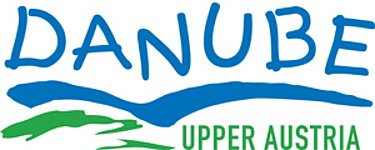Falkenstein Castle Ruins
The Falkensteiner castle complex was the most important aristocratic residence in the upper Mühlviertel.
We ask for your understanding for the cordoning off of the inner castle area
The preservation association for the rescue of the Falkenstein ruins asks all visitors to the Falkenstein ruins to understand that the interior of the castle grounds may only be entered during the renovation weekends.
The sole purpose of the ongoing conservation work is to make the entire castle area safe for the public to walk through and admire again.
It is currently far too dangerous due to unsecured areas inside the castle and there is even a danger to life in some parts!
The founding legend of Falkenstein
Many hundreds of years ago, the mighty family of the Counts of Peilstein lived in the upper Mühlviertel. The count, of whom the legend tells, was a passionate hunter. He owned several valuable hunting falcons. The noble boys Rudger and Ralf were entrusted with their care. They were good friends. One day, Rudger unfortunately lost the count's favourite falcon. The count was furious and threatened to have the boy dragged to death if the falcon was not brought back within three days. As Ralf would not abandon his friend, they both scoured almost the whole of the count's hunting ground. They did not find the falcon. Despondent and desperate, Rudger gave up the search on the evening of the last day and returned to his master's castle. Ralf, however, continued the search. While Rudger spent his last night in the castle dungeon, Ralf roamed the forest alone in the moonlit night. He paid no heed to the thorns that tore his robe to shreds, nor was he frightened by the howls of the ravenous wolves. Whistling softly to lure the falcon, he strode ahead.
In the valley of the Ranna stream, he climbed a rock to get a better look round. Then he saw the falcon close in front of him. Ralf lured him with his usual call. The stray bird willingly allowed itself to be caught. Ralf rejoiced - now he could save his dear friend. He quickly made his way home. The morning was already dawning when he finally saw his master's castle in front of him. The sun was rising as he approached the castle gate. Breathless and exhausted, he rushed into the castle courtyard - and saw his friend. He stood bound and was about to be tied to the tail of a wild black horse. Ralf cried out. Then the count saw him. He caught sight of the falcon and his anger was immediately appeased. Rudger was freed from his shackles. Weeping with joy, the friends embraced. The count had Ralf show him the place where the falcon had been found. The Peilsteiner liked the area very much. He therefore had a castle built on the rock and named it Falkenstein. In future, his family was called "Falkensteiner" after the castle. In the 13th century, the Falkensteins began their clearing and settlement activities in the direction of the Bohemian Forest from the developed area around Falkenstein. On 29 July 1218, Calhoch II von Falkenstein founded the Schlägl monastery on the Große Mühl at the foot of the Bohemian Forest.
Saving the ruins of Falkenstein Castle
For three years, great efforts have been underway in Hofkirchen i. M. to prevent the complete collapse of the internationally renowned Falkenstein castle ruins.
More than 40 relevant interested parties and experts are highly motivated to help in the rescue operation for Falkenstein Castle. The volunteers ranged from academic art experts and technicians to artists, students, teachers and trained craftsmen.
Since then, the individual ruin rescuers have formed a homogeneous working team that enjoys working together amidst the old walls. Overall, great progress has been made in preserving the unique old walls. In close co-operation with the Federal Monuments Office, the team is working step by step to achieve the common goal of preventing the further decay of the 800-year-old castle complex. This year, the volunteers spent a total of 10 working weekends on site until mid-October. In addition to the four fixed focus weekends, several activists also worked individually on a further six weekends.
Falkenstein Castle is the root of the settlement history of the Mühlviertel and neighbouring Bavarian and Bohemian regions
The ruins of Falkenstein were donated by the bishops of Passau. Its purpose was to clear the surrounding region, including parts of Bavaria and Bohemia. Zawisch von Falkenstein was the most famous scion of the dynasty and succeeded King Ottokar of Bohemia at the end of the High Middle Ages. He was subsequently beheaded in Hluboka and buried in the Bohemian monastery of Hohenfurt. The famous Zawisch Cross is kept in Hohenfurt Abbey in Bohemia and forms the centrepiece of the bilateral provincial exhibition Upper Austria/Bohemia in 2013. 800 years ago, Calhoch von Falkenstein founded Schlägl Abbey, which can rightly be described as the cultural centre of the Rohrbach district.
After a rather quiet slumber over the past 15 years, the Falkenstein castle complex is once again enjoying great popularity thanks to regular conservation activities. Elderly people, families, tourists and school classes are equally attracted to the ancient walls and are delighted with the tireless voluntary work to prevent the final decay of this unique monumental jewel and window into the late Middle Ages and other centuries.
4142 Hofkirchen im Mühlkreis
Phone +43 7285 7011
Fax machine +43 7285 7011 - 4
E-Mail gemeindeamt@hofkirchen.at
Web www.hofkirchen.at/
https://www.hofkirchen.at/
Contact person
Tourismusverband Hofkirchen i.M.
Markt 8
Phone +43 7285 7011
Fax machine +43 7285 7011 - 4
E-Mail gemeindeamt@hofkirchen.at
Web www.hofkirchen.at/
- always open (24/7)
- open to the public
- Can only be viewed from outside
- Suitable for groups
- Spring
- Summer
- Autumn
- Winter
Please get in touch for more information.
Suggest changes
Please let us know how we can improve the quality of this object or if there is any incorrect information on this page (eg. opening hours, contact, etc.).
Fields marked with an asterisk (*) are obligatory



